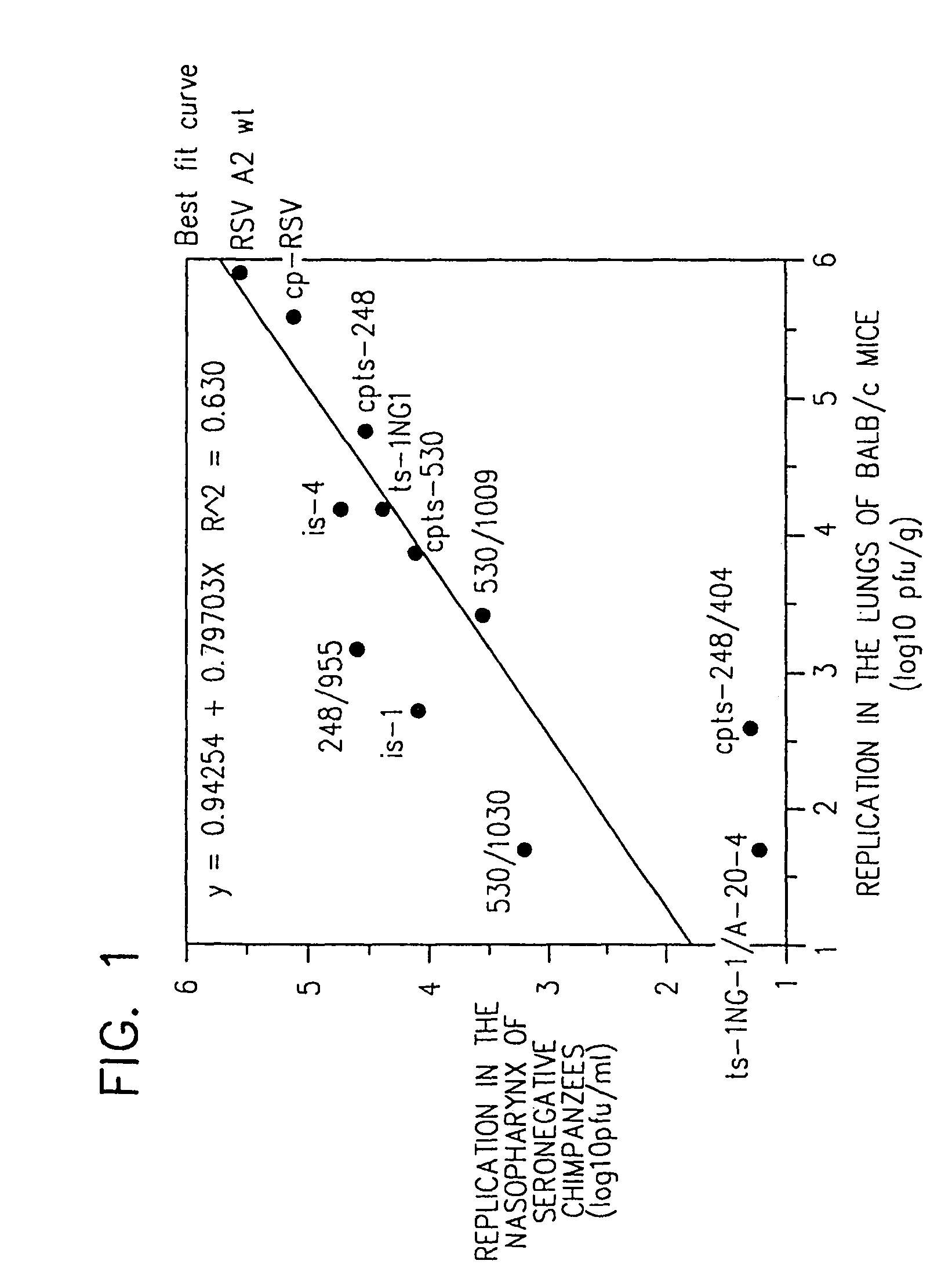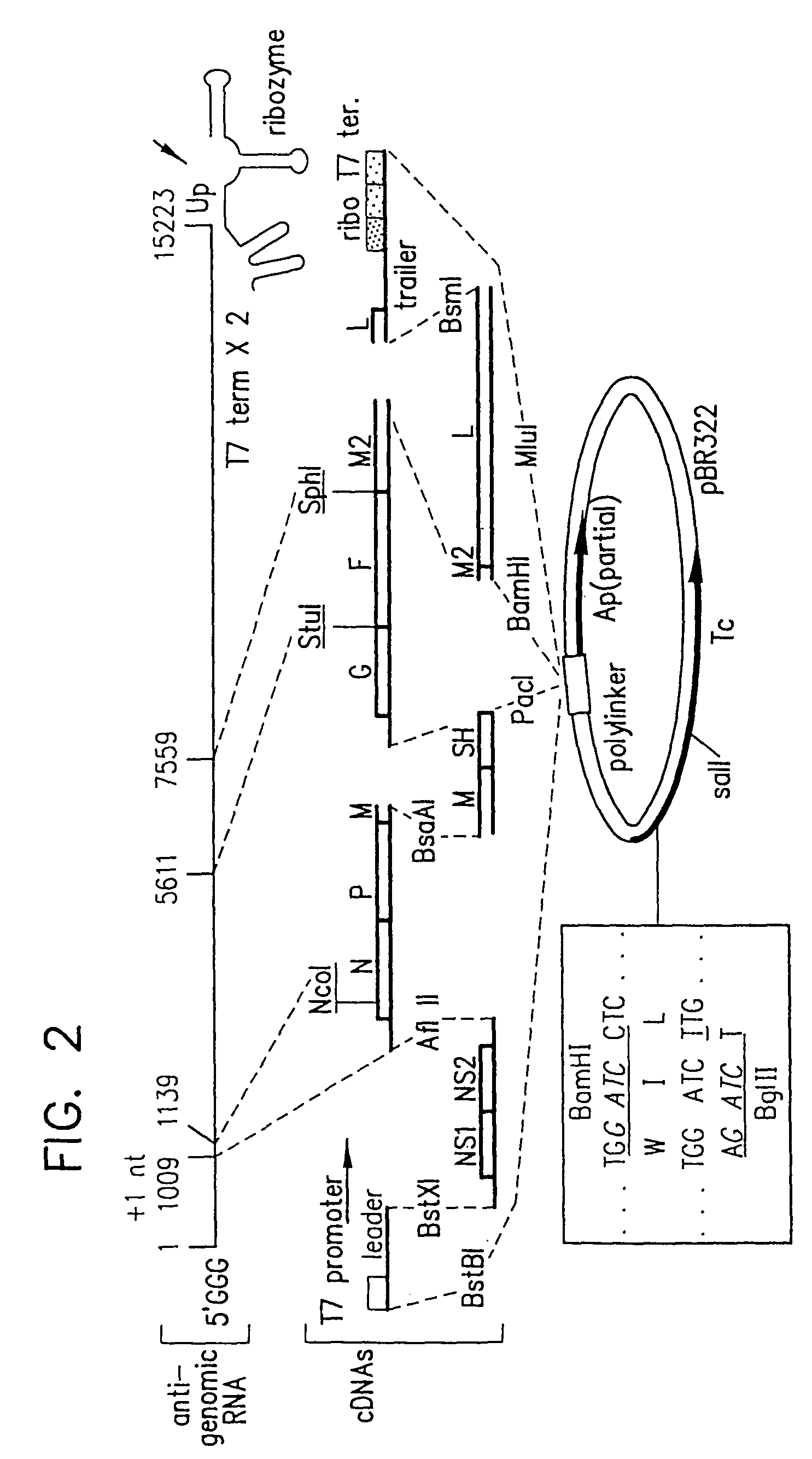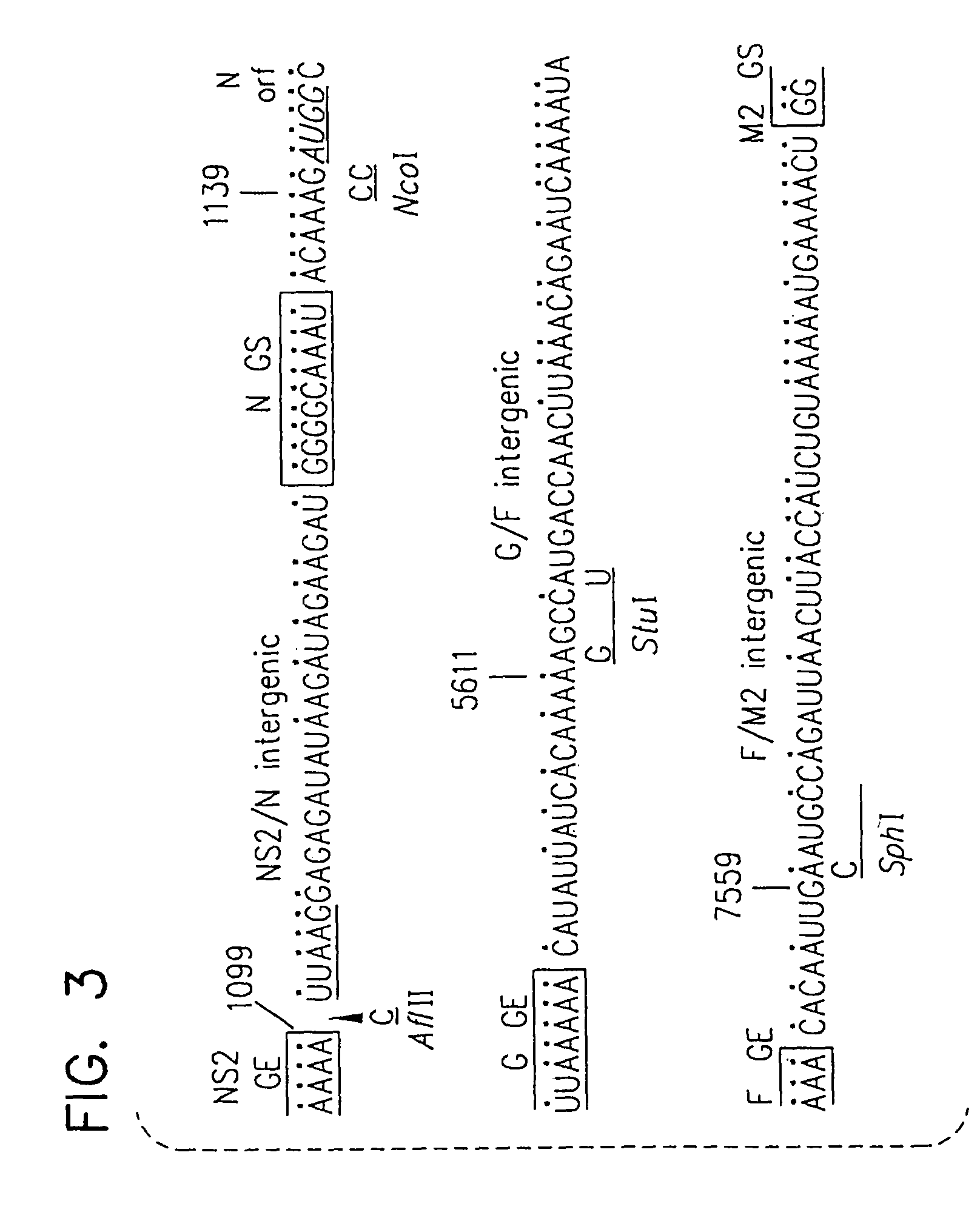Attenuated chimeric respiratory syncytial virus
a technology of which is applied in the field of attenuated chimeric respiratory syncytial virus, can solve the problems of failure to develop successful vaccines, failure to achieve safe and effective vaccines, and severe morbidity and significant mortality associated with rsv infection. , to achieve the effect of satisfying the attenuation level and decreasing the likelihood of reversion from an attenuated
- Summary
- Abstract
- Description
- Claims
- Application Information
AI Technical Summary
Benefits of technology
Problems solved by technology
Method used
Image
Examples
example i
Isolation and Characterization of Mutagenized Derivatives of Cold-passaged RSV
[0184]This Example describes the chemical mutagenesis of incompletely attenuated host range-restricted cpRSV to produce derivative ts and sp mutations which are more highly attenuated and thus are preferred for use in RSV vaccine preparations.
[0185]A parent stock of cold-passaged RSV (cpRSV) was prepared. Flow Laboratories Lot 3131 virus, the cpRSV parent virus that is incompletely attenuated in humans, was passaged twice in MRC-5 cells at 25° C., terminally diluted twice in MRC-5 cells at 25° C., then passaged three times in MRC-5 to create cpRSV suspension for mutagenesis.
[0186]The cpRSV was mutagenized by growing the parent stock in MRC-5 cells at 32° C. in the presence of 5-fluorouracil in the medium at a concentration of 4×10−4M. This concentration was demonstrated to be optimal in preliminary studies, as evidenced by a 100-fold decrease in virus titer on day 5 of growth in cell culture, compared to m...
example ii
Use of Cold Adaptation to Attenuate cpRSV Mutants
[0226]This Example describes the introduction of growth restriction mutations into incompletely attenuated host range-restricted cpRSV strains by further passage of the strains at increasingly reduced temperatures to produce derivative strains which are more satisfactorily attenuated for use in human vaccines.
[0227]These cold-adaptation (ca) approaches were used to introduce further attenuation into the cpRSV 3131 virus, which is incompletely attenuated in seronegative children.
[0228]Under the first strategy, a parent stock of cold-passaged RSV A2 (cpRSV 3131) obtained from Flow Laboratories was prepared by passage in MRC-5 cells at 25° C. as described in Example 1. Briefly, cold-passaged virus was inoculated into MRC-5 or Vero cell monolayer culture at a multiplicity of infection of ≧0.01 and the infected cells were incubated for 3 to 14 days before subsequent passage. Virus was passaged over 20 times at 20-22° C. to derive more atte...
example iii
Introduction of Further Attenuating Mutations Into ts-RSV
[0232]This Example describes the use of ts mutants as parental viruses to produce more completely attenuated strains. Two RSV A2 ts mutants were selected for this process, namely ts-4 and ts-1 NG1. Two distinct methods were chosen to introduce additional mutations into the RSV ts mutants. First, the incompletely attenuated RSV ts mutant was subjected to chemical mutagenesis, and mutagenized progeny that are more temperature-sensitive with regard to plaque formation were selected for further analysis. Second, the RSV ts mutants were passaged at low temperature to select RSV nts mutants with the ca phenotype, i.e., increased capacity to replicate at suboptimal temperature compared to wild-type parental virus.
[0233]A parent stock of ts-1 NG1 virus was prepared from Flow Laboratories Lot M4 of live Respiratory Syncytial Virus (A-2) ts-1 NG-1 mutant, MRC-5 grown virus. This mutant, derived from the ts-1 mutant by a second round of ...
PUM
| Property | Measurement | Unit |
|---|---|---|
| temperature-sensitivity | aaaaa | aaaaa |
| temperature | aaaaa | aaaaa |
Abstract
Description
Claims
Application Information
 Login to View More
Login to View More - R&D
- Intellectual Property
- Life Sciences
- Materials
- Tech Scout
- Unparalleled Data Quality
- Higher Quality Content
- 60% Fewer Hallucinations
Browse by: Latest US Patents, China's latest patents, Technical Efficacy Thesaurus, Application Domain, Technology Topic, Popular Technical Reports.
© 2025 PatSnap. All rights reserved.Legal|Privacy policy|Modern Slavery Act Transparency Statement|Sitemap|About US| Contact US: help@patsnap.com



